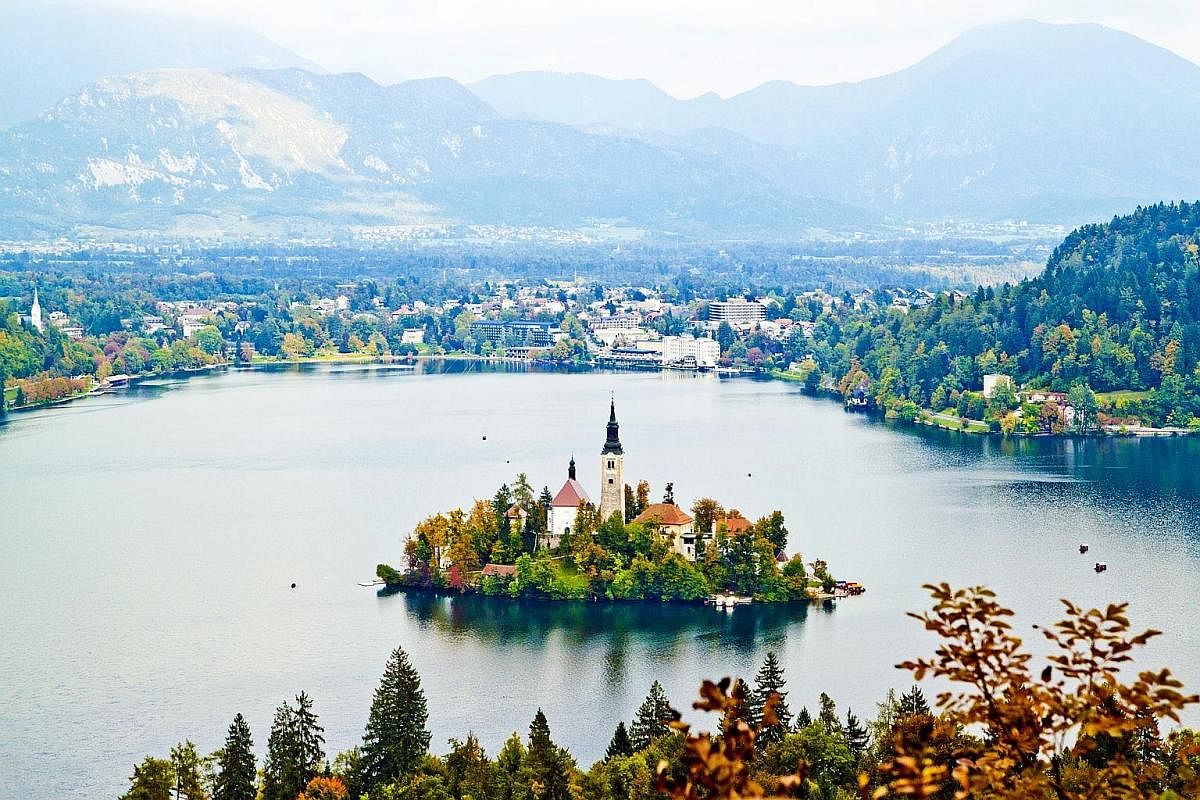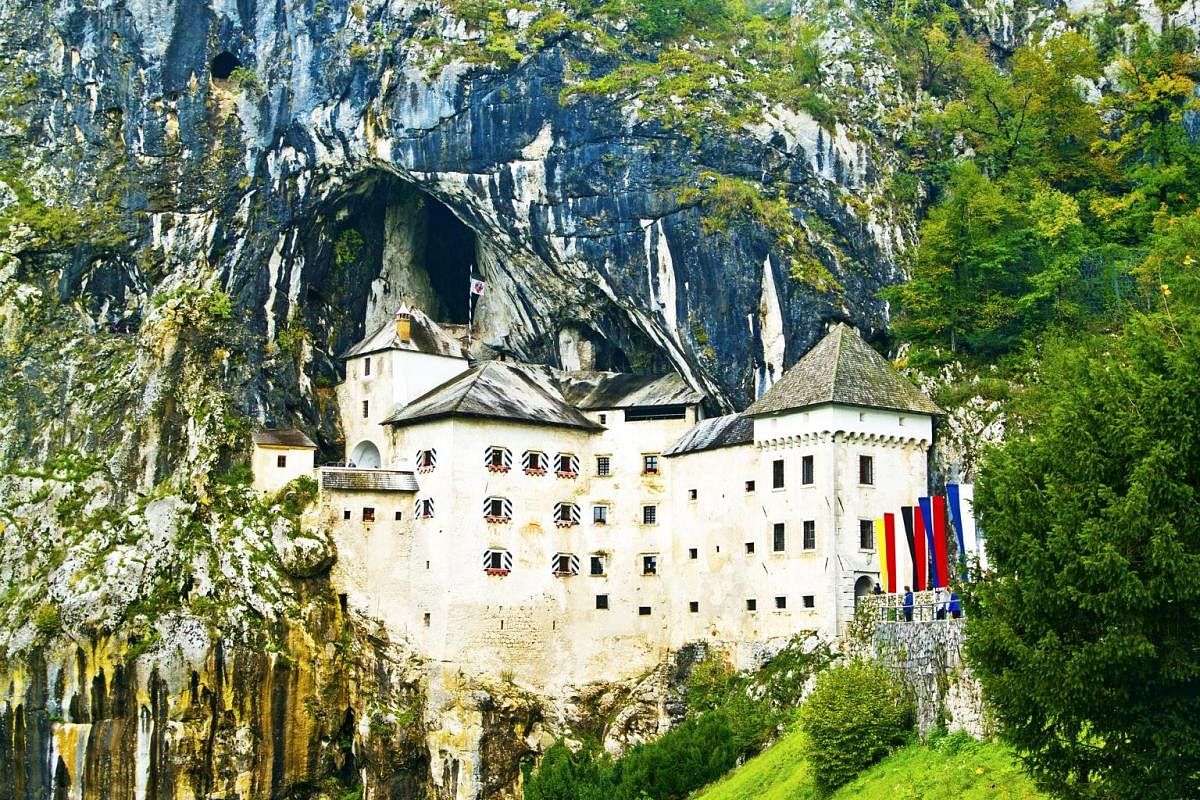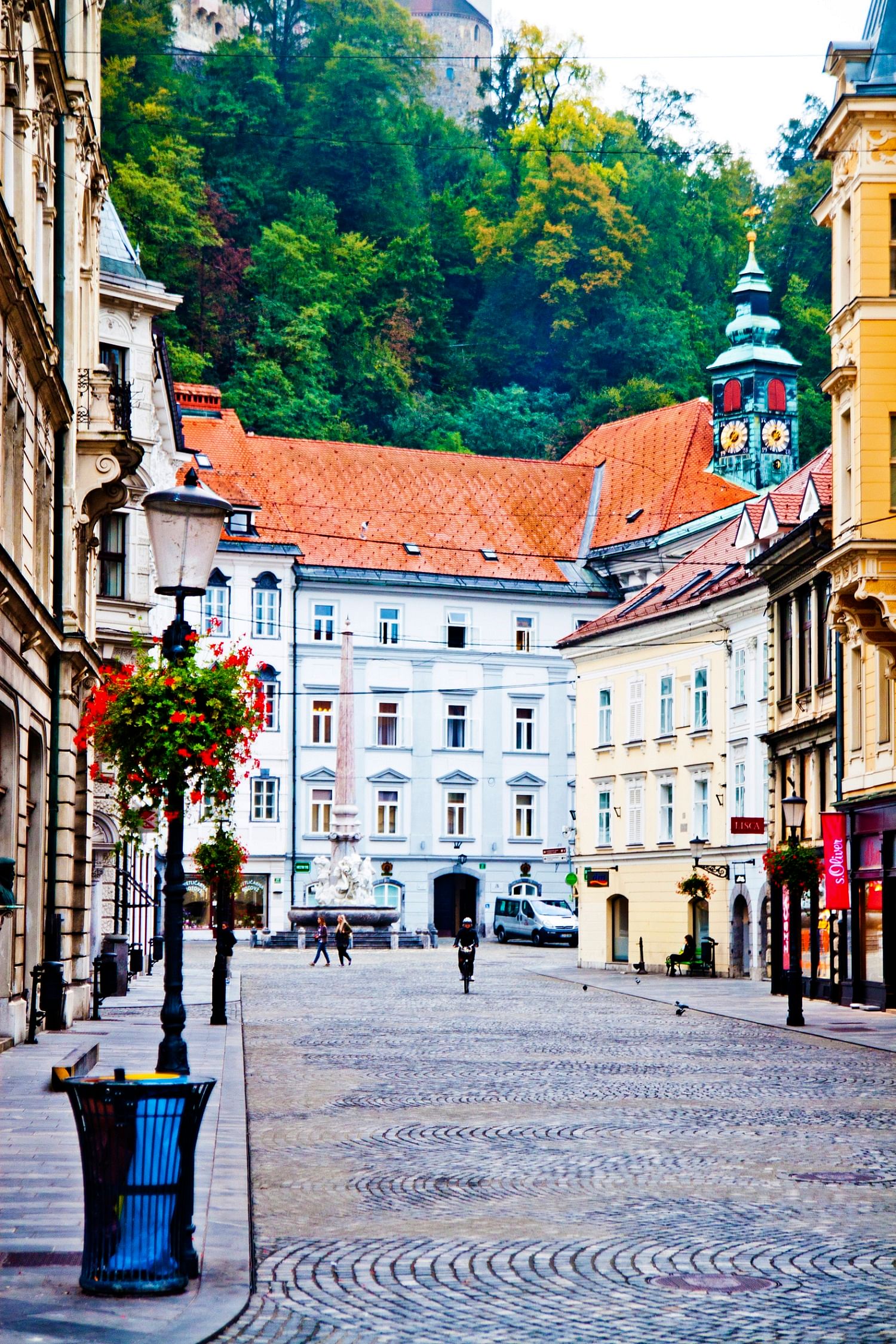Europe in miniature
Bordering Austria, Italy, Hungary and Croatia, Slovenia is packed with diverse landscapes that are within relatively short drives


The roar of rapids gets louder. I tread cautiously on the narrow, slippery walkway, dwarfed by spiny stalactites and soaring stalagmites that rise as high as 15m.
I peek nervously over the ledge. Fifty metres below, a fiercely foaming river is slashing raucously through the base of the imposing karst gorges that tower over us like a cathedral.
I am exploring the subterranean ecosystem of the Unesco-protected Skocjan Caves in Slovenia, one of the largest known underground canyons in the world.
Our group reaches the thin, vertigo-inducing Cerkvenik Bridge, suspended precariously within the cavernous 150m chamber.
"You shall not pass!" Viktor, our Slovenian friend, says jocularly to my husband and me, over the crash of turbulent waters.
The Lord Of The Rings reference is apt - we cannot help but picture J.R.R. Tolkien's Middle Earth, particularly the battle scene between Gandalf and Balrog in the Moria Caves.
As I steel myself to cross the linkway of this dim underground world, I consider how surreal it is, that an hour before, we were just basking in the Mediterranean sunshine of the Slovenian coast and in the morning traversing the lattice of cobbled streets in the charming capital city of Ljubljana.

As Viktor would say several times during this trip: "In Slovenia, you can hike the mountains in the morning and swim the sea in the afternoon."
Slovenia - not to be confused with another Slavic nation, Slovakia - is considered a small country, nestled within south-central Europe, bordering Austria, Italy, Hungary and Croatia.
But Slovenia is power-packed with remarkably diverse landscapes, as its geography straddles the karst caves, the Julian Alps, Mediterranean Sea and the Pannonian Plains, all easily accessible within a relatively short drive. That is why the country is often dubbed "Europe in miniature".
CULTURE AND CASTLE
Few have heard of it and even fewer can pronounce it, but Ljubljana - Slovenia's capital - is a beautifully captivating city that oozes old-town allure and a romantic storybook quality. (For the record, say "lyu-blya-nuh").
My husband and I are happy to spend hours, over several days, strolling its arched alleys and willow-lined banks, gazing at the amalgam of Renaissance, Baroque and Art Nouveau architecture.
We are staying at the historic Grand Hotel Union (www.union-hotels.eu/en/grand-hotel-union), centrally located in the heart of the city, just steps away from the Triple Bridge, a series of three charming passages vaulting over the Ljubljanica River.
The hotel's ornately designed yellow-and-gold plum convention hall, Union Hall, was for decades a barometer of political and cultural progress, echoing with dialogue and brass music, and even once housed the country's first cinema.
We ride the funicular up to a 900-year-old mediaeval castle on a hill, which offers unrivalled views of Ljubljana and museum exhibitions on Slovenian history.
Slovenia, previously one of Yugoslavia's six constituent republics, gained independence in 1991. Unlike other constituents such as Bosnia, Slovenia endured relatively little damage from regional conflict.
From my breathtaking vantage of the clock tower, I realise how clean and livable Ljubljana appears.
Car traffic is restricted in the centre, reserving the leafy riverside promenades for pedestrians and cyclists. We are told that the European Commission bestowed Ljubljana the European Green Capital Award last year.
COASTAL CITIES

We visit Piran, the jewel of the 42km Slovenian coast on the Adriatic Sea and fall in love with the atmospheric mediaeval streets and colourful harbour docked with boats.
Piran was, for years, controlled by the doges of Venice, evidenced by the flamboyant Baroque architecture around the marbled Tartini Square. Today, it remains bilingual, with a laid-back charm of Italy.
For lunch, we pop into a restaurant by the harbour and feast on fresh catch of sea bream, squid and scallops grilled perfectly with sea salt from the nearby Secovlje saltpans.
Slovenian waters are teeming with the tastiest seafood, due to the country's passionate protection of the environment and care to avoid over-fishing.
East of Piran, we drive past another Venetian town on a cape - Izola, which has a scruffier fishing-village character. To the south is Portoroz with flashier resorts, casinos and jetties.
We visit Lake Bled, possibly Slovenia's most recognisable icon, complete with a fairy-tale, church-crowned island in the middle of a pristine lake, framed by majestic alpine vistas and a cliff-hanging mediaeval castle.
We hike up the Ojstrica trail for the best view, where photographers have tripods primed for the best sunset pictures. On the lake, tourists are heading towards the island on traditional pletna boats.
In the immediate vicinity of Bled is Triglav National Park, named after its crown jewel Mount Triglav, Slovenia's highest mountain at 2,864m.
We drive through the Julian Alps via the Vrsic Pass, a series of 50 serpentine bends, and admire the dynamic relief of serrated peaks, deep glacial valleys, green-carpeted meadows and slopes of beech, spruce and larch.
Clear streams flow into larger rivers, such as the unforgettably beautiful Soca River.
The "emerald river", as it is nicknamed, maintains an emerald-turquoise shade through its 138km length. The gorgeous setting propelled Disney to film scenes from Chronicles Of Narnia: Prince Caspian (2008) here. The water is aquamarine, but has an icy-cold temperature.
We spot groups of exhilarated white-water rafters at other spots and see why Triglav National Park and its surrounds are havens for outdoor enthusiasts in summer.
VILLAGE LIFE
As we traverse Slovenia's diverse landscapes, we pass countless quaint towns and villages, embodying a wealth of historical sites, chapels and local curiosities.
Viktor, who currently lives in Ljubljana, takes us to his childhood home, where his mother lives, in a lovely village within the region of Medvode.
He points out a tiny clearing in the woods, a path he and siblings used to tread to play by a nearby river. We hang out at the backyard, complete with vegetable patches, apple trees, chicken coops and chopped wood ready for the winter.
"In Slovenia, the older generation proudly built houses with their own hands or closely supervised it," Viktor says. "They will not want to move away."
He presents us jars of berry preserves, homemade by his mother-in-law. Exceptionally hospitable, like Viktor, are the Slovenes we encounter throughout our trip, in addition to firmly self-assured and distinctly broad-minded.
As we drive back to Ljubljana on our final day, I consider how Slovenia has much to offer for those interested in exploring a corner of Europe that is refreshingly less touristy.
An earthly paradise of charming cities, enchanting castles, enthralling lakes, turquoise rivers, and coastal cities, Slovenia is a surprising revelation.
•Denise Lim is a freelance writer.
Join ST's Telegram channel and get the latest breaking news delivered to you.
A version of this article appeared in the print edition of The Sunday Times on December 24, 2017, with the headline Europe in miniature. Subscribe

